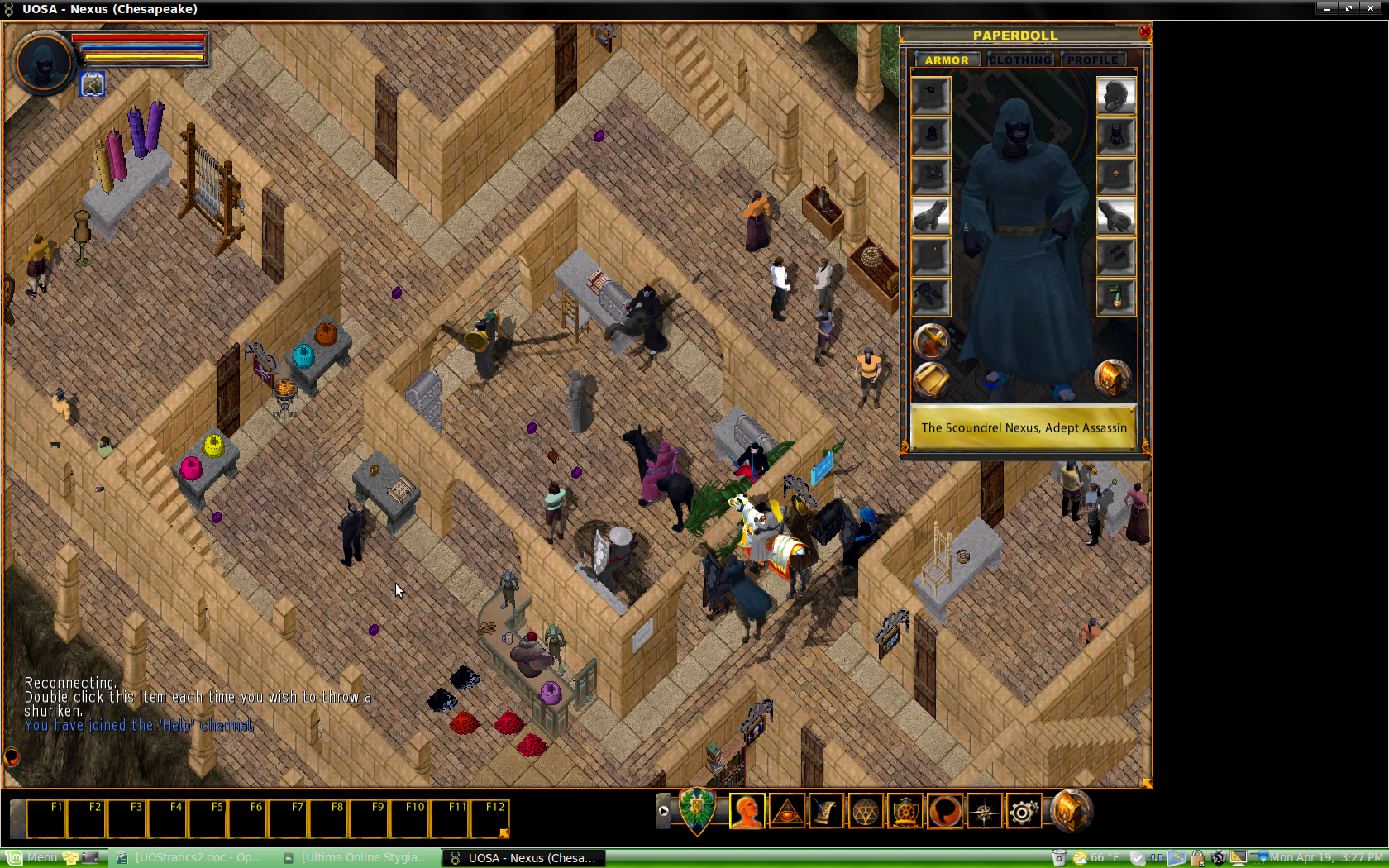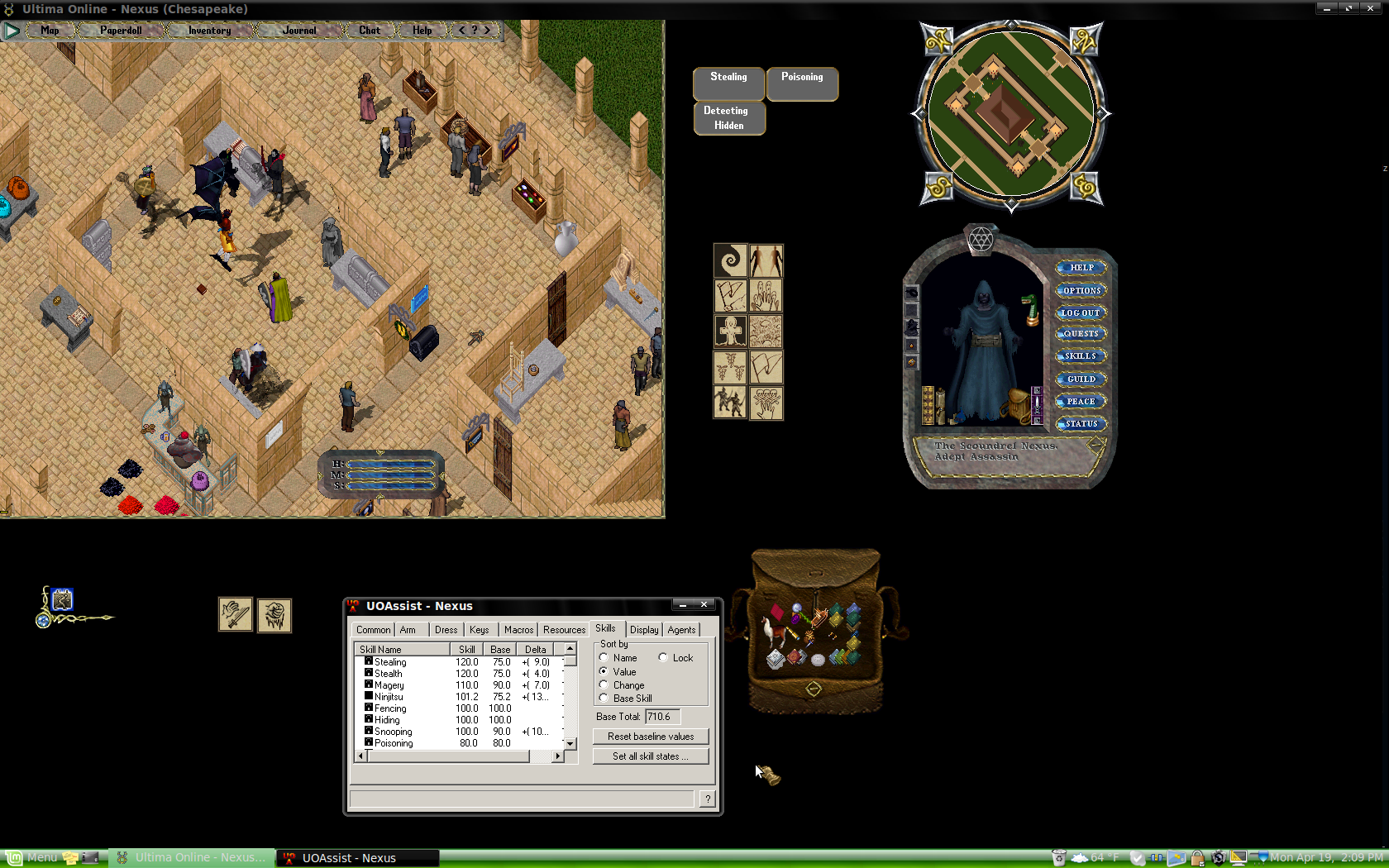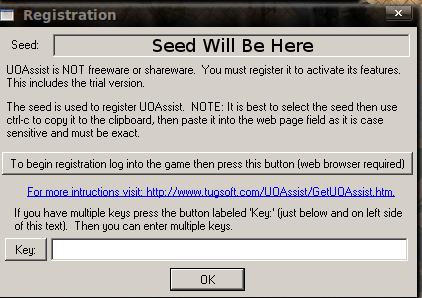Ultima Online on Linux Orginal Guide by Hugo of Napa Valley, Updated Guide by Nexus of Chesapeake, April 2010.
Ultima Online: Penguin Powered
sudo apt-get install wine1.2 You should at this point be prompted to enter your super user password do so and hit enter and wait till WINE has completely installed. You should have a new option on in your menu’s called “Wine”. Please search through it and find the “Configure Wine” link and open it. Use the drop down Menu on the window that opens to set the Windows Version (located at the bottom of the window) to Windows XP, as I’ve found it works best with the rest of this guide. For non-Debian users please go to http://www.winehq.org/download/ and find the installation instructions for your distro. wget This will download Winetricks, to run it type in the following in your terminal: You should get a popup with a list of software available to be installed, for this tutorial go ahead and go through the list and check corefonts, d3dx9, d3dx10, and fontfix. Click OK and winetricks will set up Direct X 9 and 10, install and setup the basic Windows Fonts to help with graphical errors in text on your Windows Forms when running programs with WINE. Ultima Online Legacy or Enhanced Client My how times have changed, it is now as easy or, easier to install Ultima Online’s Enhanced Client with WINE than it is to install the classic or legacy client, that is unless you have access to a legacy client install on another computer you can copy over, or a Ultima Online CD you can install and patch to the latest version. To make things easy I’ll start with instructions on how to install the Enhanced Client first, and then help with the Legacy Client. Enhanced Client Setup step by step as taken from. http://appdb.winehq.org/objectManager.php?sClass=version&iId=17380&iTestingId=45078
Note: If you run into patching errors, make sure you don’t have more than one copy of uopatch.exe running. While that helps getting uopatch.bin to start, it causes errors DURING patching. You may have to kill the process and restart.
Illustration UOAssist A couple of years ago if you wanted UOAssist to work with Linux you were pretty much out of luck. These days thanks to improvements to WINE it is now possible, with a little bit of extra work. First off you’ll need an install of IE6 or IE 7 which is easy enough to manage if you use winetricks (see I told you it’s a useful program). Simply enter “sh winetricks” in a terminal hit enter and select IE6 or IE7 from the pop-up menu. Now go to the Tugsoft website and download a copy of the UO Assit installer. Open the downloaded installer by right clicking it and picking “Open with WINE Windows Program Loader” and when prompted navigate to your Ultima Online Install folder, usually it is /home/[your user name]/.wine/drive_c/Program Files/Electronic Arts/Ultima Online Stygian Abyss Classic. Let the install finish and then run UOAssist from the WINE section of your Menus. Don’t click Continue on the UOAssist window yet! Instead pick “Settings” in the lower Right corner of the window and set UOAssist to Load with “Method Three” as this is more stable on Linux distributions. If you already have a UOAssist registered account you can recover your key by copying the Seed from the Registration Menu and then manually pasting it into the box on the Tugsoft Locate Key page.
Illustration At this point you should have a working Ultima Online Installation, and if desired UOAssist operating on Linux, along with some other helpful software such as winetricks, that not only helped you get UO set up, but will be useful in the future. Other Options Dual Booting, if you have a valid windows installation but also want to use Linux, it’s easier than ever to set up a Dual Boot System. The latest versions of the GRUB boot loader will automatically detect for Windows installations and configure a boot loader for you during it’s (GRUB’s) installation. This makes switching back and forth as easy as restarting your PC. Several Linux Distributions now also include something called a wubi on their Live CD’s this allows you to install that version of Linux from inside Windows, this makes installing Linux even easier, and it can be removed like any other windows based program through Add/Remove Software in the Control Panel. To switch from Windows to Linux, just reboot. VMWare, I hope this guide has been helpful to those of us that Don’t wish to rely on Windows, or for those that are interested in making the switch to a Linux distro, but were concerned about their ability to continue playing Ultima Online. So without further ado, Well met and see you in Britannia! |





Recent Comments